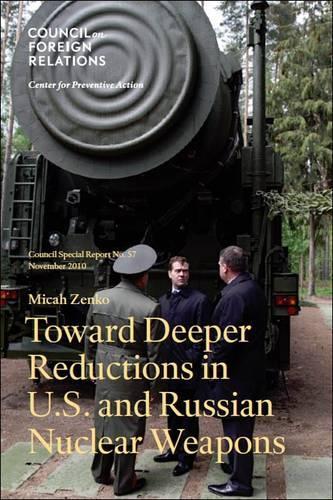
Assessing Deep Reductions in U.S. and Russian Nuclear Weapons
(Paperback)
Publishing Details
Assessing Deep Reductions in U.S. and Russian Nuclear Weapons
By (Author) Micah Zenko
Council on Foreign Relations
Council on Foreign Relations
30th November 2010
United States
Classifications
Professional and Scholarly
Non Fiction
Nuclear weapons
327.17470947
Physical Properties
Paperback
56
Description
In 2009, presidents Barack Obama and Dmitry Medvedev pledged to sign a bilateral treaty to limit the nuclear arsenals of the United States and Russia to approximately 1,500 deployed nuclear weapons and 750 delivery systems. While this represents a significant reduction from cold war-era levels, the two countries still retain more than 90 percent of the world's nuclear weapons. As good-faith progress toward President Obama's stated commitment "to seek the peace and security of a world without nuclear weapons," both countries need to begin negotiating a follow-up bilateral treaty to reduce their respective arsenals. Micah Zenko offers specific recommendations for U.S. policy on four strategic and technical issues that such a treaty would raise: beginning high-level discussions with U.S. allies on the tradeoffs between extended deterrence and deeper nuclear cuts; promoting the joint U.S.-Russia development of missile defense radar and interceptors; proposing transparency and confidence-building measures for deployed U.S. and Russian tactical nuclear weapons; and, developing a framework to account for deploying advanced conventional weapons on nuclear-capable delivery systems. At a time of global nuclear uncertainty, this report defines a path to greater security and commitment to a nonnuclear world.
Author Bio
Micah Zenko is a fellow for conflict prevention at the Council on Foreign Relations.
